
One of the “shrimp spires” found during the first few dives at the Von Damm hydrothermal vent field. The shrimp (possibly Rimicaris sp.) are crawling all over the rocks, likely attracted by the warm fluid seeping from the spire’s surface. Image courtesy of NOAA Okeanos Explorer Program, MCR Expedition 2011. Download larger version (jpg, 1.8 MB).
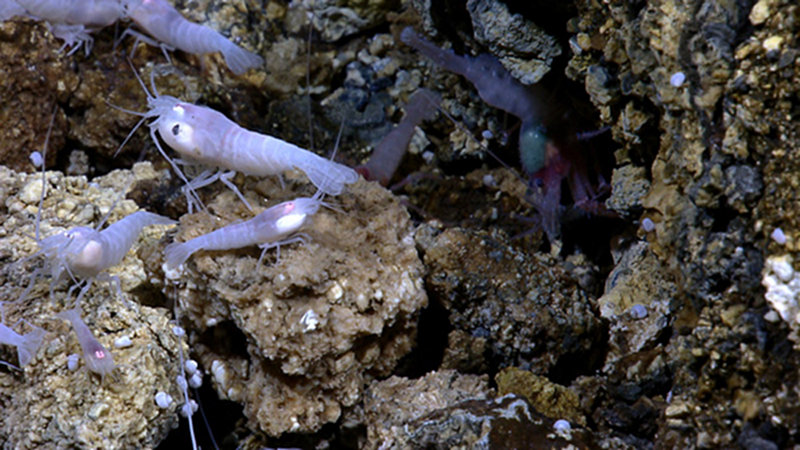
At least two species of shrimp are found at the Von Damm hydrothermal vent site. One relies on chemosynthesis for food, and the other may be a predator. Image courtesy of NOAA Okeanos Explorer Program, MCR Expedition 2011. Download image (jpg, 130 KB).
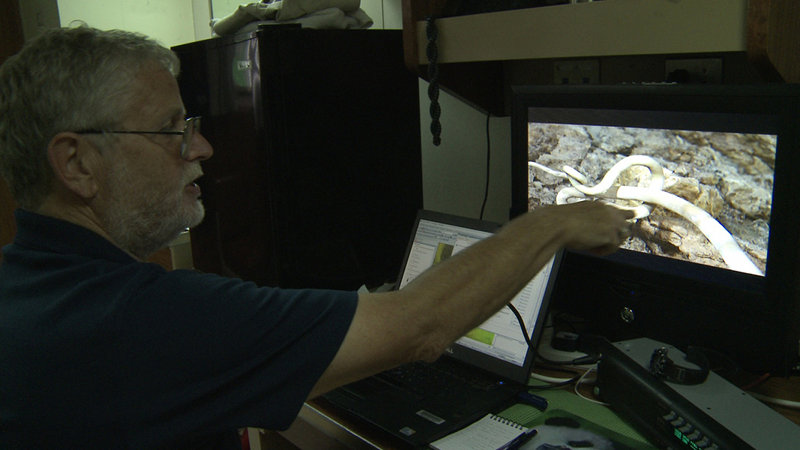
Professor Paul Tyler watches video footage of a tubeworm at the Von Damm hydrothermal field. Image courtesy of NOAA Okeanos Explorer Program, MCR Expedition 2011. Download larger version (jpg, 303 KB).
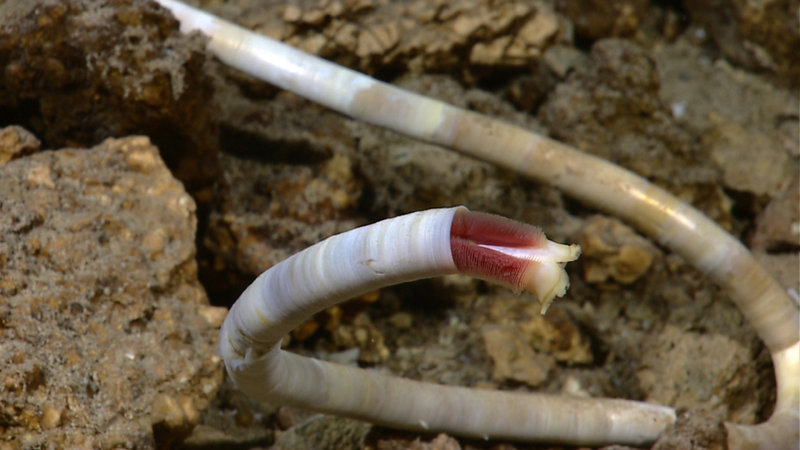
Close-up image showing the first live tubeworm seen during the expedition at a hydrothermal vent site in Atlantic waters. Chemosynthetic bacteria living inside the tubeworms derive energy from chemicals emitted in the hot water of hydrothermal vents. Image courtesy of NOAA Okeanos Explorer Program, MCR Expedition 2011. Download larger version (jpg, 1.1 MB).
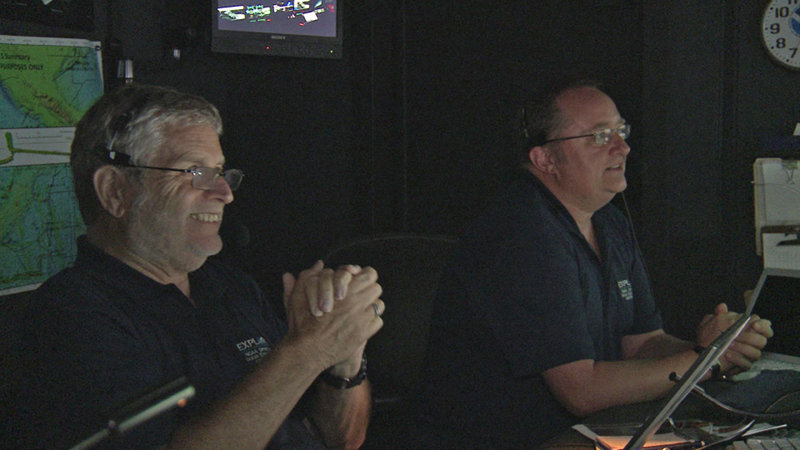
Professor Paul Tyler and Dr. Chris German, science leads for the expedition, are excited about observations at the Von Damm hydrothermal field. Image courtesy of NOAA Okeanos Explorer Program, MCR Expedition 2011. Download larger version (jpg, 1.3 MB).
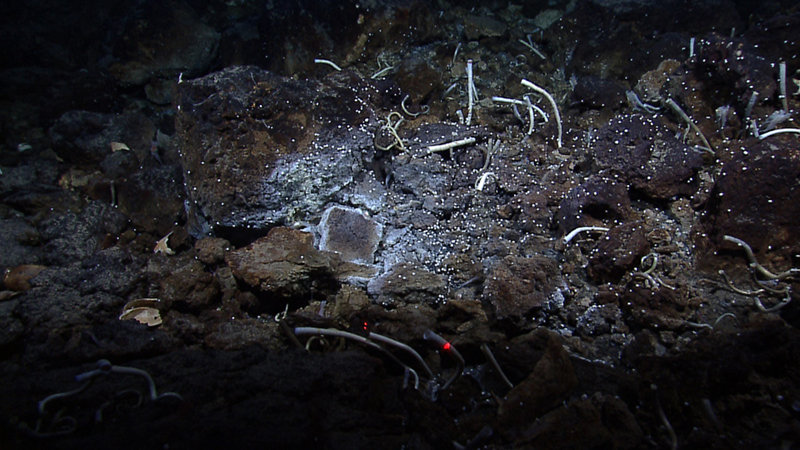
The “moment of discovery” – The site where ‘chemosynthetic’ shrimp and tubeworms were observed together for the first time at a hydrothermal field. These animals, relying on symbiotic chemosynthetic bacteria, derive energy from chemical processes occurring at hydrothermal vents or seeps on the seafloor, unlike most other life on Earth which relies upon energy from the sun and is termed photosynthetic life. Image courtesy of NOAA Okeanos Explorer Program, MCR Expedition 2011. Download larger version (jpg, 1.4 MB).
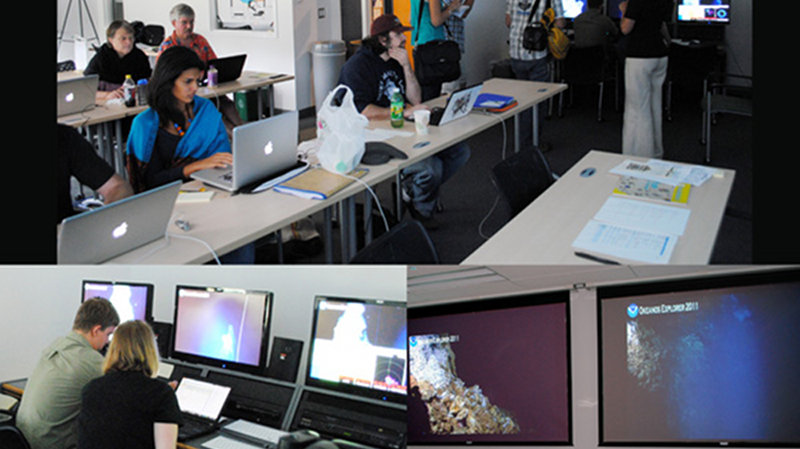
The science team at the Exploration Command Center in Rhode Island participated in the expedition from shore by watching live video streamed from the ship on computer screens and large projectors, and communicated with the ship using an RTS intercom system, and instant messaging. Image courtesy of NOAA Okeanos Explorer Program, MCR Expedition 2011. Download image (jpg, 83 KB).
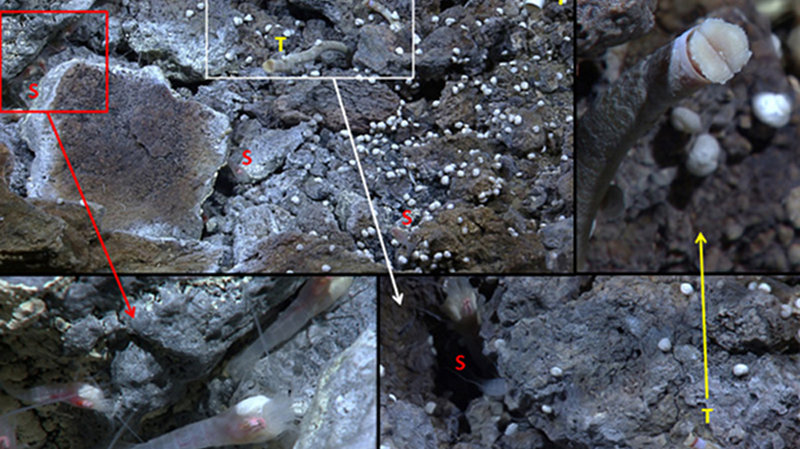
Close-up images showing the discovery: the top-left and bottom-right images show close-up views of the site hosting chemosynthetic tubeworms (T) and shrimp (S) containing chemosynthetic bacteria. The numerous small conical animals are gastropods (marine snails) that also appear to be associated with vent activity. Image courtesy of NOAA Okeanos Explorer Program, MCR Expedition 2011. Download image (jpg, 126 KB).
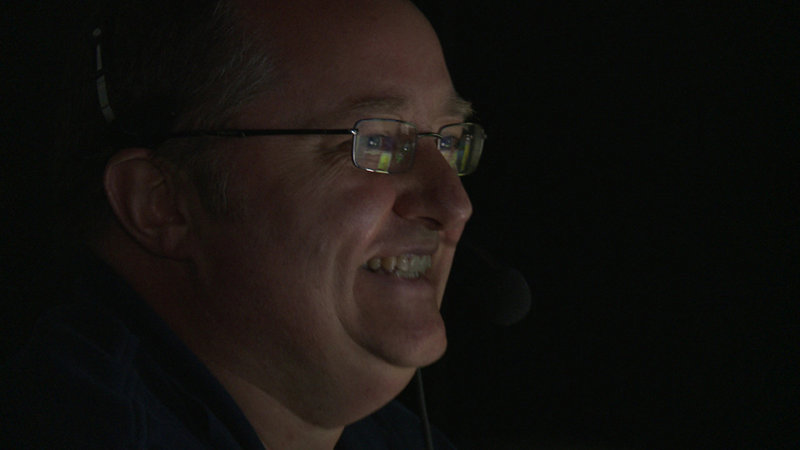
Science Team Lead, Dr. Chris German, quite happy about the video feeds of the Von Damm hydrothermal field captured by the ROV more than 2,200 meters below. Image courtesy of NOAA Okeanos Explorer Program, MCR Expedition 2011. Download larger version (jpg, 782 KB).